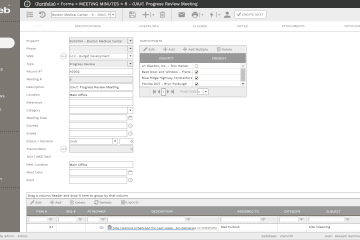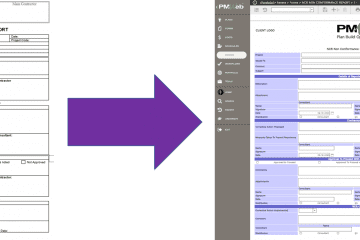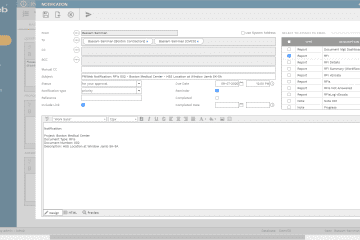One of the key challenges in delivering capital projects is how to have the perfect collaboration platform for managing, monitoring, evaluating and report formal, also known as written communications for which it will be used by all entities involved in delivering the project as well as the complete projects’ portfolio that the organization has. Although the requirements could be many and could vary depending on the project owner needs, nevertheless, the seventeen requirements detailed below are the minimum that organizations must have for their project collaboration platform if they want to really improve their projects’ formal communication.
- INCLUSIVE by ensuring that all project entities and those authorized to formally communicate are identified and no one is left out from the project communication.
- COMPREHENSIVE to cover to all types of formal communications needed during the project life cycle phases.
- Eliminate AMBIGUITY by ensuring clarity, concise, correct and complete formal project communication.
- Enforce STANDARDIZATION of used terminologies for actions, status, specifications, phases, locations, trades, WBS levels, etc.
- Promote TIMELY response to avoid delaying critical project schedule activities.
- Enable VIEWING all documents that are attached to project’s formal communications.
- Enforce GOVERNANCE by ensuring that approval authorities are respected in performing those formal communications.
- Ensure ACCOUNTABILITY for the authorized individuals for their actions when reviewing and approving formal communications.
- Ensure TRANSPARENCY when it comes to monitoring, tracking and reporting on the status of those communications.
- ACCESSIBALE by those who are authorized to formally communicate from anywhere, anytime using any device.
- Enforce RESTRICTIONS on accessing the different types of formal project communications including what information can be provided by each authorized individual.
- Support the approved formal communication LANGUAGES that the project should abide with
- Enable PRESENTING the project formal communications templates in any desired form and format to comply with the project’s communication requirements.
- Provide the INSIGHT to analyze the captured communication information to enable better and faster informed decision making.
- Allow SEARCHING for all existing communications and documents that are relevant for a specific topic.
- Promote LEAN construction management best practices by eliminating the waste in performing formal communications thus increasing their value.
- Enable COMPLIANCE with the requirements to archive and turnover formal communications to the project owner when the project is completed.
Using a Project Management Information System (PMIS) like PMWeb, organizations will be able to address and fulfil those requirements to enable capital project owners to have the perfect platform for managing, monitoring, evaluating and reporting formal communications on their capital projects.
Requirement #01: INCLUSIVE by ensuring that all project entities and those authorized to formally communicate are identified and no one is left out from the project communication.
The project collaboration platform should include all entities that have a role in the project’s formal communication. PMWeb organization chart module will be used to create the organization chart for each project phase. The content of organization chart will be limited to those entities that are involved in the formal communication during each phase. For each entity, the chart will display the individuals who are formally authorized to be part of the project’s formal communication. It will not show any individuals who have no role in the project formal communication.
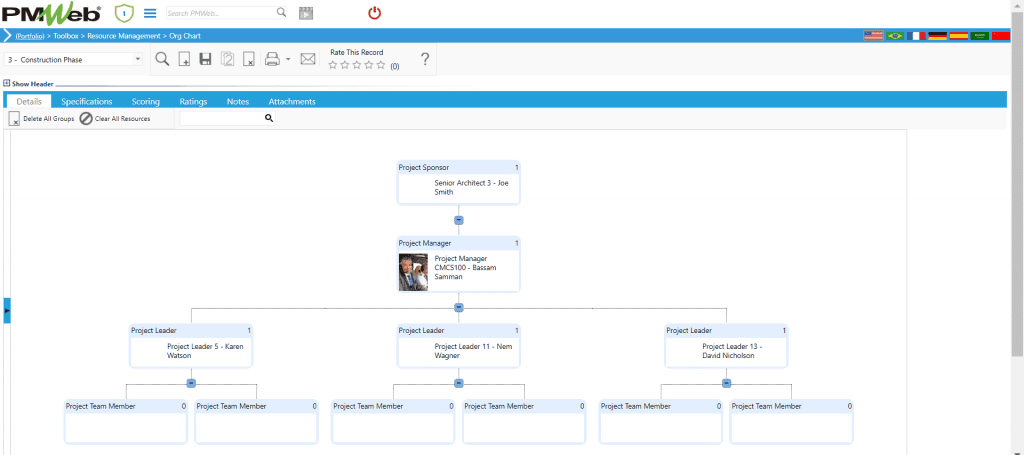
For those individuals who will play a role in the project formal communication, PMWeb Human Resources module will be used to capture their details including their contacts and their role on the project. This will enable having a complete project directory that lists all those individuals representing the different project entities who are part of the project’s formal communication plan.
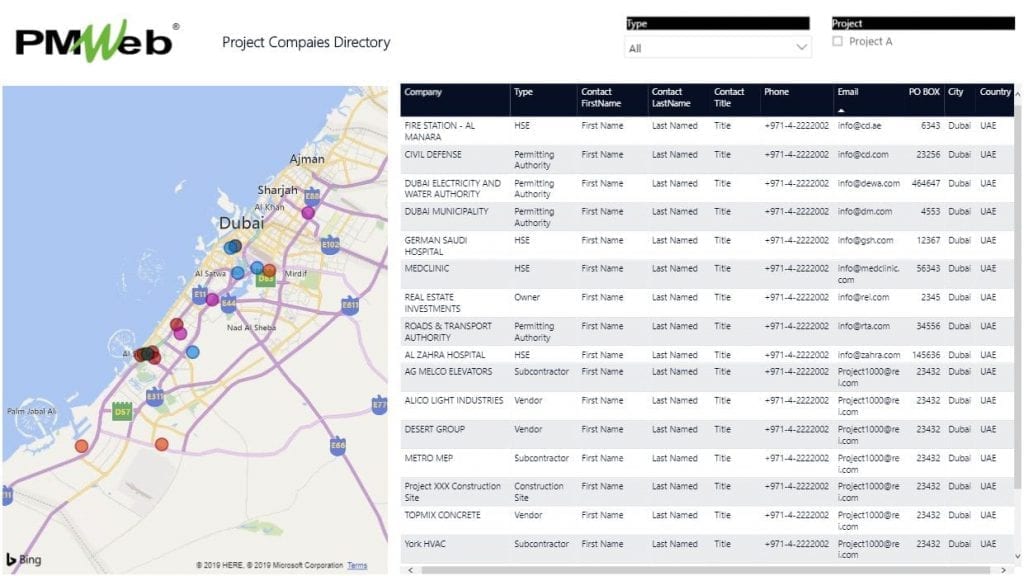
Requirement #02: COMPREHENSIVE to cover to all types of formal communications needed during the project life cycle phases.
The project responsibility assignment matrix (RAM) is a proven project management practice that helps in identifying the complete list of formal communications that are needed during the different project life cycle phases. For each process, the RAM will detail the individuals that have a role to Submit, Review, Approve or Kept Informed of the process communication. PMWeb custom form builder will be used to create the RAM for each project life cycle phase. The captured RAM details can then be presented in the desired output report.
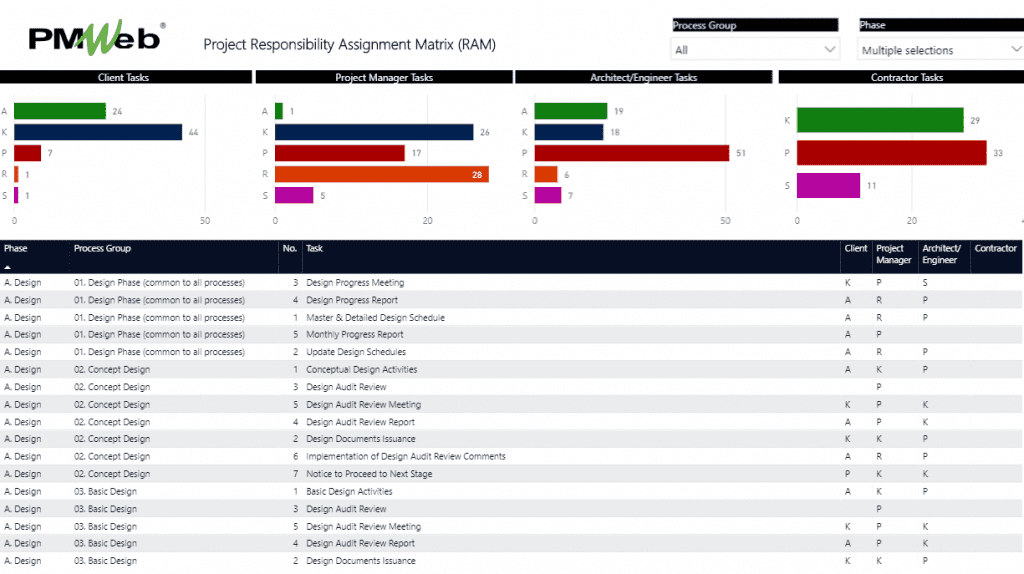
Requirement #03: Eliminate AMBIGUITY by ensuring clarity, concise, correct and complete formal project communication.
It has always been a practice adopted on capital projects to use predefined document templates for the project formal communications to ensure clarity, concise, correct and complete formal communication. Those include templates for RFI, transmittals, meeting minutes, daily reports, punch list, change orders, potential change orders, progress invoices among many others. PMWeb comes ready with most of those input forms that can be used for formal communications.

In addition, PMWeb custom form builder is used to create all other input forms that PMWeb might not have by default. Those could include for example NCR, SWI, gate passes, work permits, weekly or monthly progress report, audit checklists, inspection checklists, confirmation of verbal instruction, issues, NOC among many others.
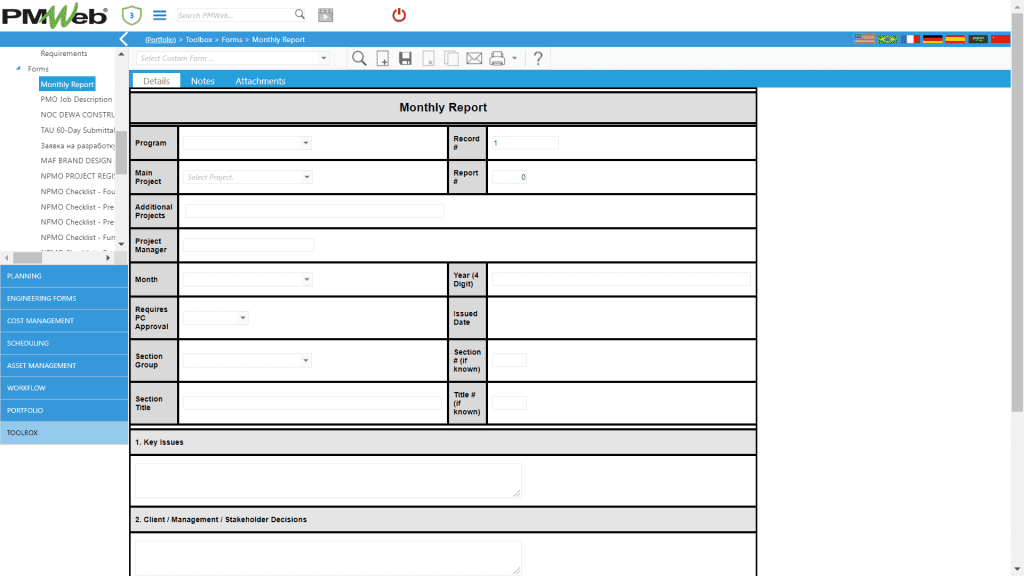
Requirement #04: Enforce STANDARDIZATION of used terminologies for actions, status, specifications, phases, locations, trades, WBS levels, etc.
All document templates have many fields for which the values need to be selected from an already established list of values. PMWeb lists module allows defining all the fields needed to complete a document template or input form and define the possible list of values for each field. This will not only ensure standardization when it comes to filling those fields but also speed up the process and eliminate data entry mistakes.

Requirement #05: Promote TIMELY response to avoid delaying critical project schedule activities.
Many of the project’s formal communication could have an impact on the project’s schedule if they are not concluded in a timely manner. It is therefore highly recommended to have a field for the “project schedule activity” that is impacted by each specific formal communication as part of the document template. PMWeb has the “Task” field in most default records and the same can be added to all other forms including custom forms. PMWeb also allows importing the updated project schedule activities along with their current start and finish dates. By having this field part of the communication template, the individuals involved in reviewing and approving the communication will have clarity on the impact that this communication might have on the current project schedule.
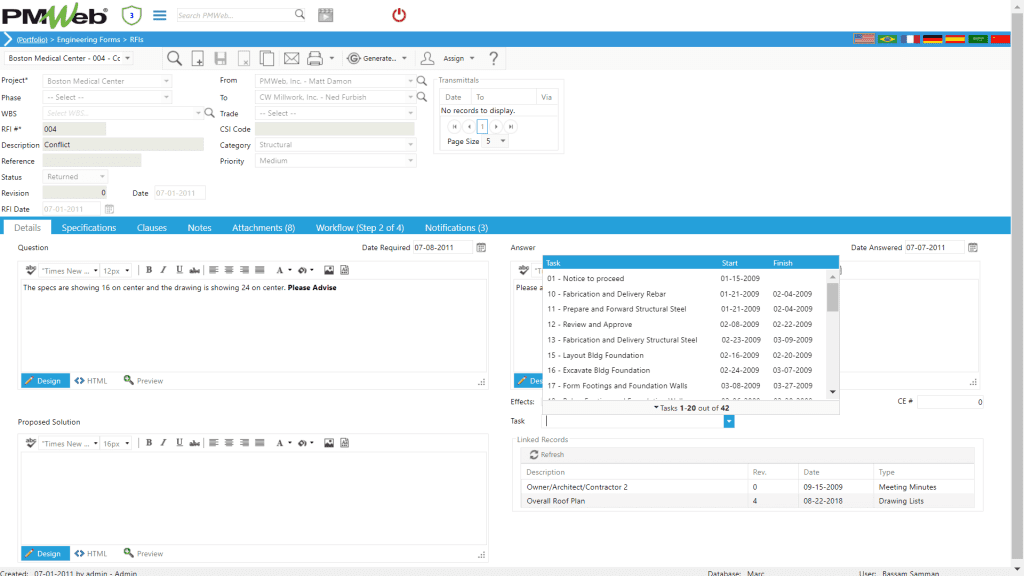
Requirement #06: Enable VIEWING all documents that are attached to project’s formal communications.
It is very common that most project’s formal communication requires having documents attached to support what is being communicated. Those could be drawings, specifications, warranties, pictures, etc. PMWeb document management repository allows the organization to create folders and subfolders to map the project’s filing cabinets. PMWeb also allows uploading all types of project documents, unless restricted by the company, into those folders. This will enable attaching those documents to the project’s formal communication and be accessed and viewed by the authorized users.
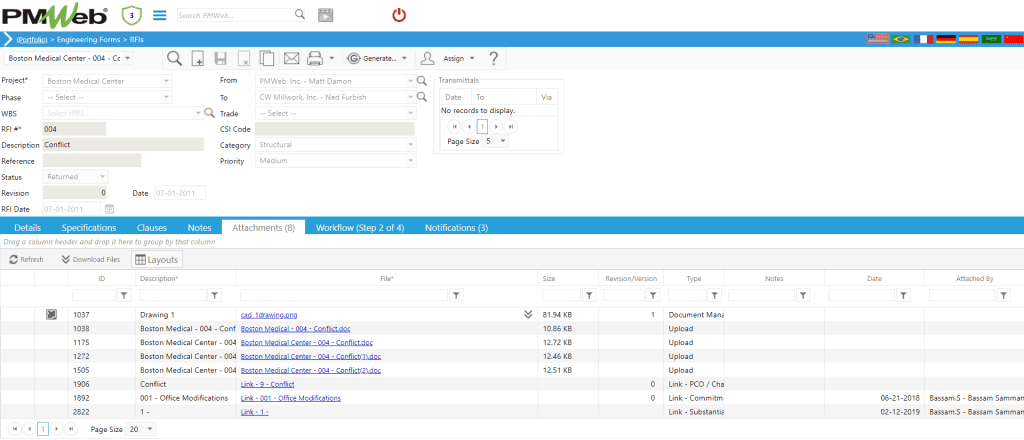
Requirement #07: Enforce GOVERNANCE by ensuring that approval authorities are respected in performing those formal communications.
PMWeb workflow allows adding the approval authority levels by adding those conditions to the visual workflow. This will ensure that project’s formal communications are automatically distributed to the intended authorized recipients. For example, a condition can be added to the change order form where the condition is set to identify change orders that have a value that exceeds $50,000 (USD) and will result in “Increased Scope”.
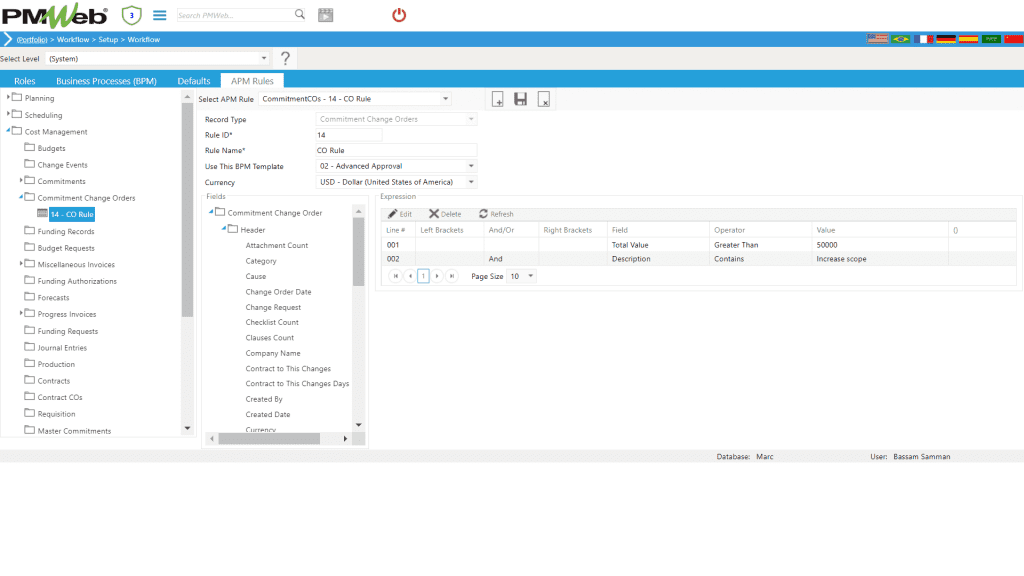
PMWeb workflow allows mapping the submit, reviews, approve, final approve and kept informed steps as required for each process and as per the responsibility assignment matrix. In addition, the workflow allows incorporating the defined approval authority levels in the workflow. This will ensure that project’s formal communications are automatically distributed to their intended recipients.
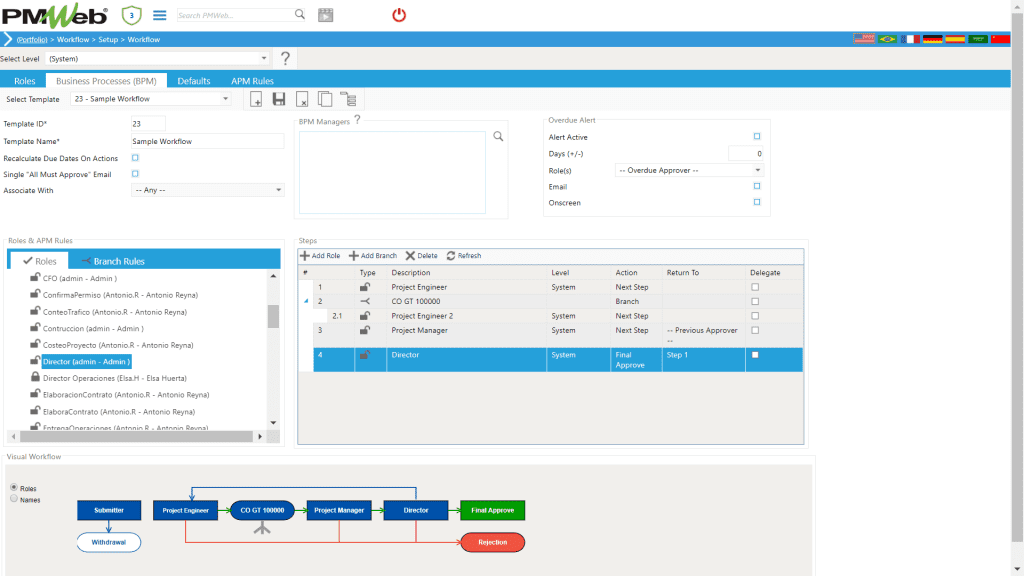
Requirement #08: Set those authorized individuals to formally communicate ACCOUNTABILITY for their actions for carrying out those communications.
When any of the project’s formal communication is submitted, the workflow tab for that specific formal communication will detail the actions taken by those involved in the workflow so they are held accountable for their remarks and actions.
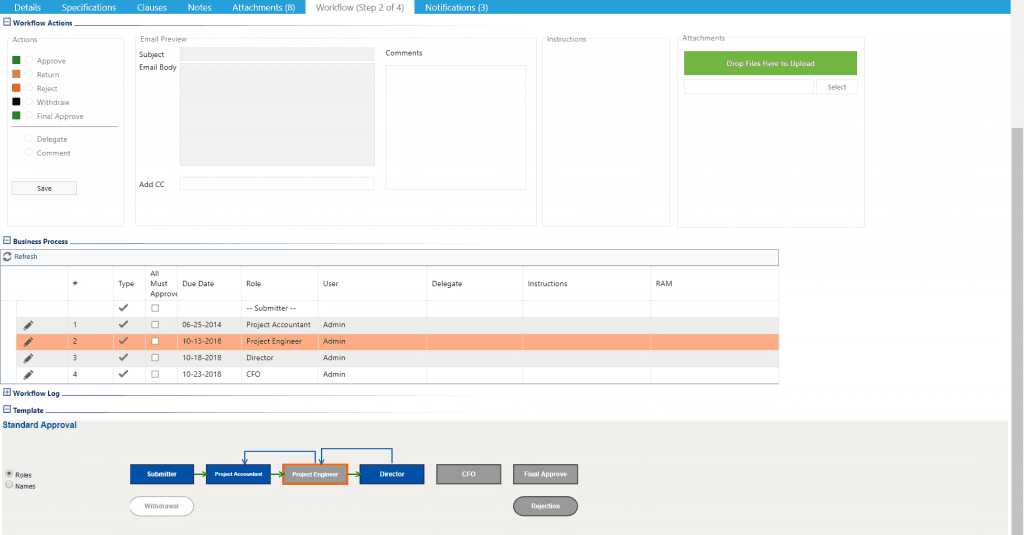
Requirement #09: Ensure TRANSPARENCY when it comes to monitoring, tracking and reporting on the status of those communications.
PMWeb allows having real-time report of the status of all those workflow steps. The report can be designed in any desired form and format. For example, the default report groups the workflow steps by their relevant process and then display the status of all due workflows. Other reports could be designed to be specific for a project individual showing him/her all due actions that can be color coded red, yellow and green for their due date status.
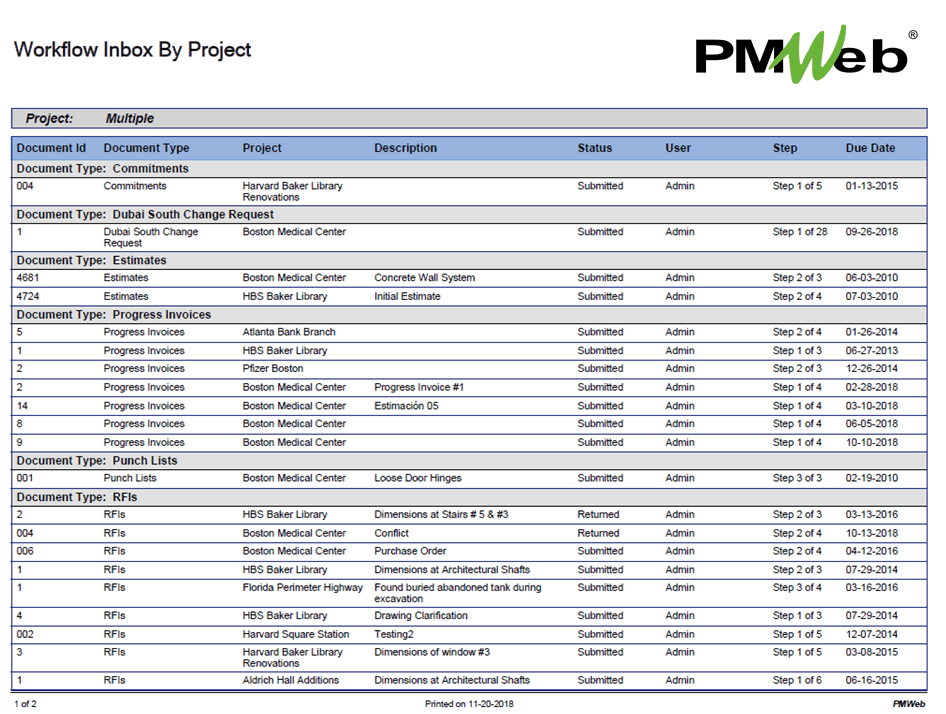
Requirement #10: ACCESSIBLE by those who are authorized to formally communicate from anywhere, anytime using any device.
PMWeb is 100% web-enabled zero-foot-print platform that enables authorized PMWeb users to access communications that are intended for them using any web browser. The PMWeb administrator will create those users and assign them to the project group that they belong to.
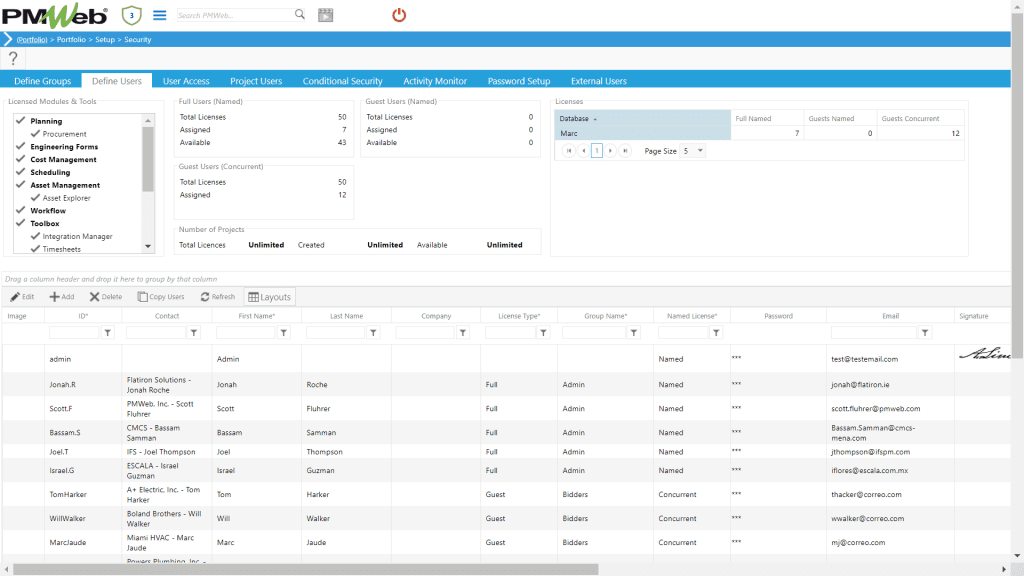
Requirement #11: Enforce RESTRICTIONS on accessing the different types of formal project communications including what information can be provided by each authorized individual.
PMWeb allows limiting access to the authorized users to the communication modules that are relevant to them only. For example, a contractor might be given access to RFI, Submittal Items, Submittal Sets, Transmittals and Daily Report modules. In addition, PMWeb allows restricting the fields within a form that the user can access. For example, for the RFI form, the contractor can be given access to the question field only and restricted from accessing the proposed solution and answer fields which will be accessed by the engineering consultant.
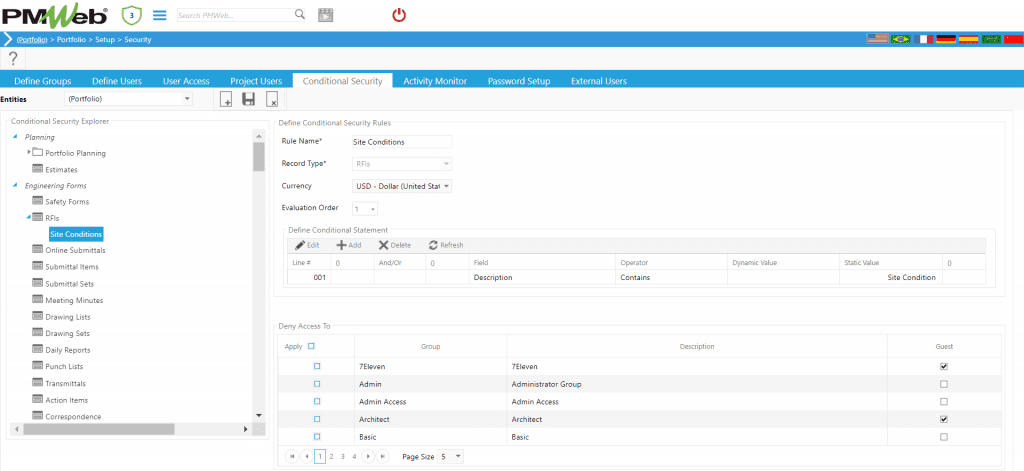
Requirement #12: Support the approved formal communication LANGUAGES that the project should abide with
Although the English language tends to be the most common used formal communication language on capital projects, nevertheless for many countries in the Middle East, Africa, Europe, Asia and South America there is a requirement to fully or partially use their country official language in those communications. On some projects where international companies are involved in delivering the project, the project formal communications might require that all those communications be in both English and the country official language. Those languages could be Latin or Non-Latin like Arabic, Russian, Chinese, Urdu, etc. PMWeb supports all Latin and non-Latin languages.
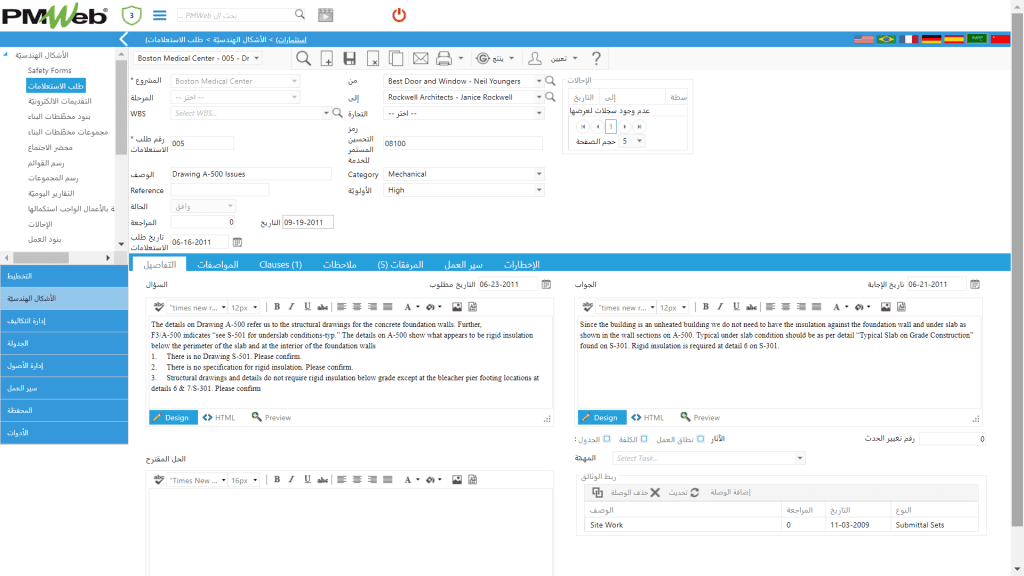
Requirement #13: Enable PRESENTING the project formal communications templates in any desired form and format to comply with the project’s communication requirements.
PMWeb allows designing all project’s formal communication in the current exact form and format that the organization has for those project communications. There is no limit on the number of those output forms which can be in English or any other desired language.
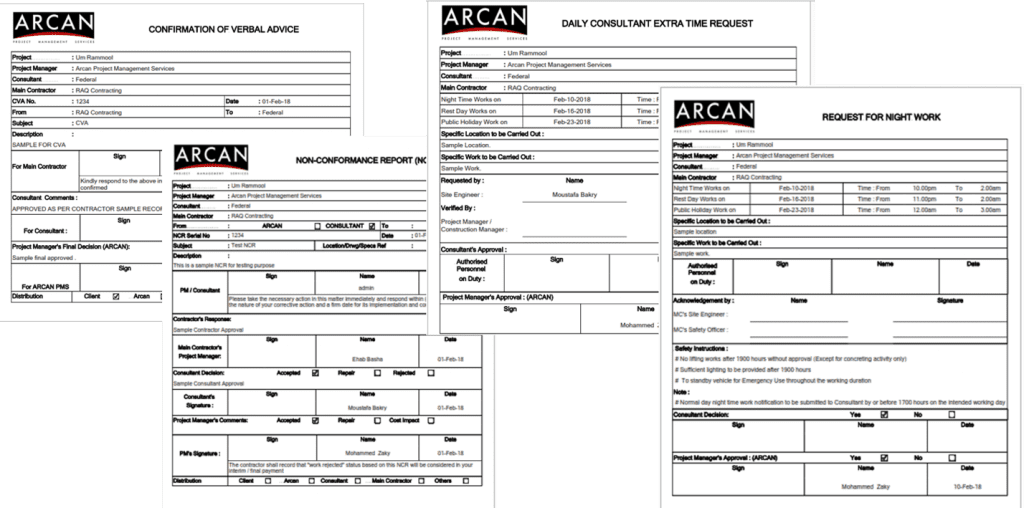
Nevertheless, it is highly recommended that organizations consider adjusting their existing forms to include the details of attached documents, workflow status and other fields that PMWeb provides. For example, the PMWeb ready-to-use transmittal form shows all details that are standard for a transmittal, nevertheless it also shows the details of attached document, notes, checklists and workflow status. This form can be redesigned to fulfil the organization’s formal communication requirements.

Of course, the formal communications output forms are not limited to form templates but they can also include letters. PMWeb Word module allows creating the letter templates and other document templates such as contract agreements that need to be automatically generated by PMWeb. The data captured in PMWeb input form will be merged into those MS Word templates to produce the desired output which can be kept in MS Word or saved as PDF file.

Requirement #14: Provide the INSIGHT to analyze the captured communication information to enable better and faster informed decision making.
PMWeb will automatically maintain a real-time register of all transactions that are specific for each project communication. Different layouts can be created and saved to only display the needed information. The displayed information can be grouped, sorted and filtered using the fields included in the layout.

This information can also be displayed in output reports to enable real-time monitoring, evaluating, reporting and sharing the particulars and status of all communication processes. The output reports can include visuals to summarize or highlight the particulars of the reported formal communication.
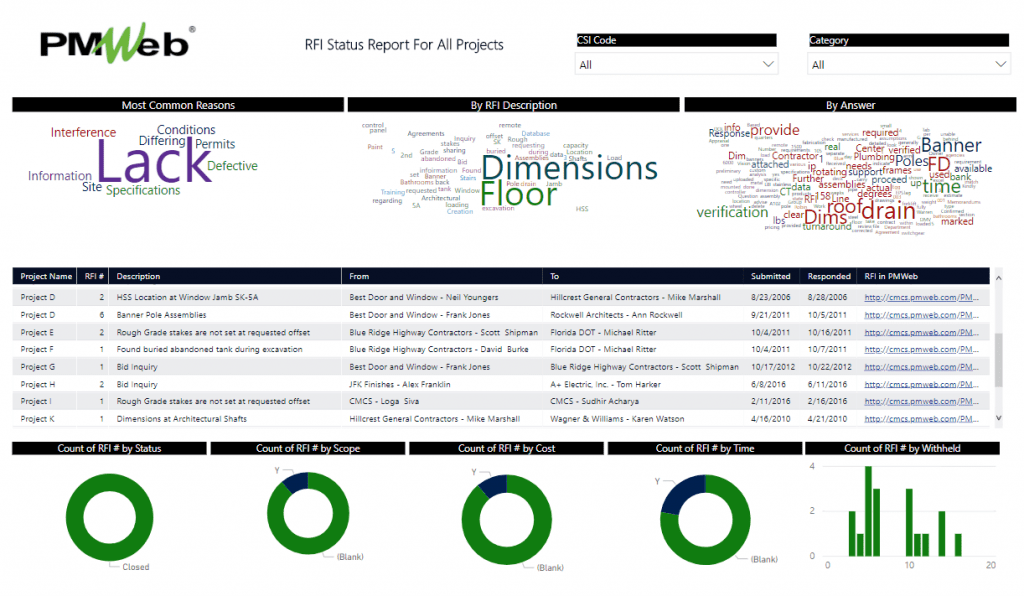
Requirement #15: Allow SEARCHING for all existing communications and documents that are relevant for a specific topic.
PMWeb allows searching for records captured in a single project or multiple projects that include “words” that the authorized PMWeb user needs to locate all records that could be of relevance. The user can select if the search should be across all project management processes managed in PMWeb or selected ones. In addition, the user can select the search to be limited to project records that their status is “approved” or any other selection of record status. Selected records can be stored in an electronic issue file to enable the user to review and determine if the record is of relevance of not. The user can create new issue files or append newly found records to an existing search issue file.
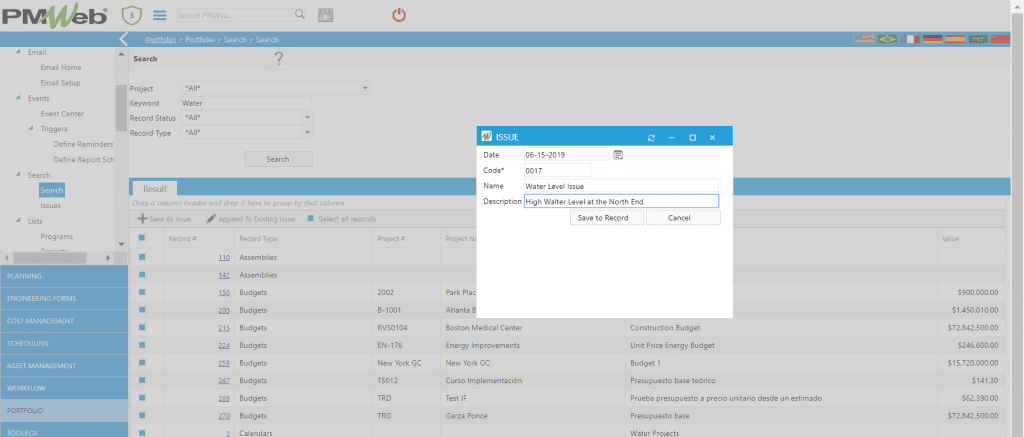
In addition, PMWeb allows searching for uploaded documents in the document management repository by the file name and document attributes, and it has the option to search the content of the document itself.

Requirement #16: Promote LEAN construction management best practices by eliminating the waste in performing formal communications thus increasing their value.
Having lean construction management processes will help in eliminating non-value add activities that consume resources but create no value for the project. This will reduce the wasted time and effort that the project team and other stakeholders spend in managing the hundreds of project management processes and associated formal communications needed to deliver construction projects.
To explain the extent of waste that formal communications could be subject to when technology is not fully implemented or utilized, the chart below details the different manual steps that could be eliminated or improved in managing the Request for Information (RFI) process. The chart details the eight types of waste that could be reduced from each step to increase its value as well as the overall RFI process value. Those are defects or errors for not doing things right the first time, overproduction when producing more than what is needed, waiting for time lost when project resources and/or information are not ready, non-utilized staff by not leveraging project resources skills, creativity and talents, transportation when moving objects from one place to another, inventory/storage for unnecessary information or material and motion for the unnecessary movement of project resources.
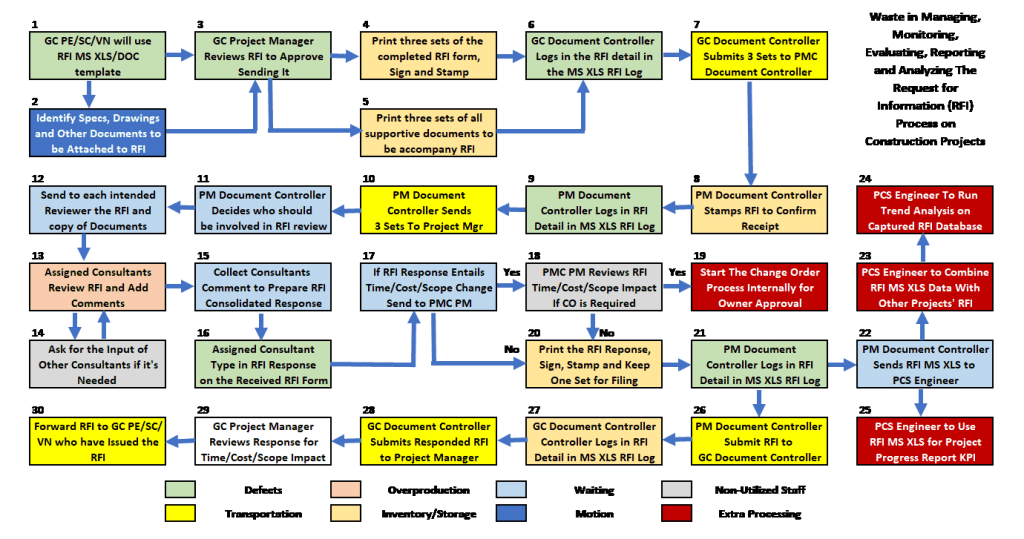
Requirement #17: Enable COMPLIANCE with the requirements to archive and turnover formal communications to the project owner when the project is completed.
For the project’s formal communications and documents that need to be turned over as “Soft Copy” to the project owner when the project is completed, PMWeb Archiving module will be used to extract and archive the needed PMWeb records and documents. PMWeb Archiving module allows the user to select the PMWeb records to be archived, for which folders will be created to match the selected archived modules.

